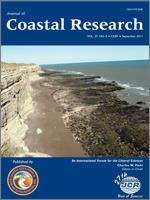INTRODUCTION
Donoghue and Parkinson present three concerns regarding our article: (1) the temporal and geographic limitations of the tide-gauge data, (2) the inadequacy of tide-gauge data to represent future conditions, and (3) ice-sheet meltwater volume.
Before responding to each of these issues, we note that our emphasis was to accurately characterize U.S. and global tide-gauge recordings during the 20th century, rather than to either project into the future or to speculate as to the causes.
LIMITATIONS OF TIDE-GAUGE DATA
Unfortunately, it appears that Donoghue and Parkinson (hereafter D&P) did not read our article sufficiently to grasp its scope or intent. For example, in discussing gauges selected for analysis, they state “The gauge locations were only in the United States.” However, even as indicated in the title of our article, in addition to the U.S. data analysis, we analyzed global data sets, including those of Church and White (C&W; 2006) and a more recent set posted by C&W on Permanent Service for Mean Sea Level (PSMSL), and we presented an extended analysis of the gauges selected by Douglas (1992) to represent global sea level. All three analyses yielded small, negative accelerations. We are mystified that D&P did not recognize the global analysis, which occupied about three pages of our article, including the Table 2 listing the 23 gauges incorporated in the extended Douglas (1992) global analysis. Further, D&P state “Additionally, the authors used data collected between 1930 and 2009, despite the fact that many of the PSMSL data sets extend well back beyond 100 years.” Table 1 shows the 57 U.S. gauges analyzed for their full records, one of which was 156 years (San Francisco). The extended analysis of Douglas (1992) included global records from 1905 to 2010 and, as noted, resulted in a small, negative acceleration.
INADEQUACY OF TIDE-GAUGE DATA TO REPRESENT FUTURE CONDITIONS
We agree that tide-gauge data, by themselves, do not provide a valid basis for predicting future sea levels and indeed that was not our emphasis. However, accurate characterizations of sea-level changes during the past century through analysis of tide-gauge records are critical to the development of improved models of sea-level change at the century-long scale.
ICE-SHEET MELTWATER VOLUME
As noted, we did not try to address the causes of sea level rise. However, in discussing the results of Rignot et al. (2011), D&P ask the question “…where did all this meltwater go?” If the rates and acceleration of 36.3 Gt/y2 found by Rignot et al. (2011) are adopted, and using the conversion factor that 100 Gt/y of meltwater volume = 0.28 mm/y rise (Section 5.5.6, Bindoff et al., 2007), the average contribution to sea-level rise during the 18-year length of their study, is 0.91 mm/y. This may explain, in part, the increased rate of sea-level rise of approximately 3 mm/y documented by the satellite altimeters since 1992. Even considering this recent acceleration, the net over the 20th century was a small, negative acceleration. Moreover, we do not know yet whether the increased trend measured by the altimeters will be sustained or is a fluctuation. Church and White (2011) note that the rise measured by the altimeters is not statistically different than peaks in trend in the 1940s and 1970s.





